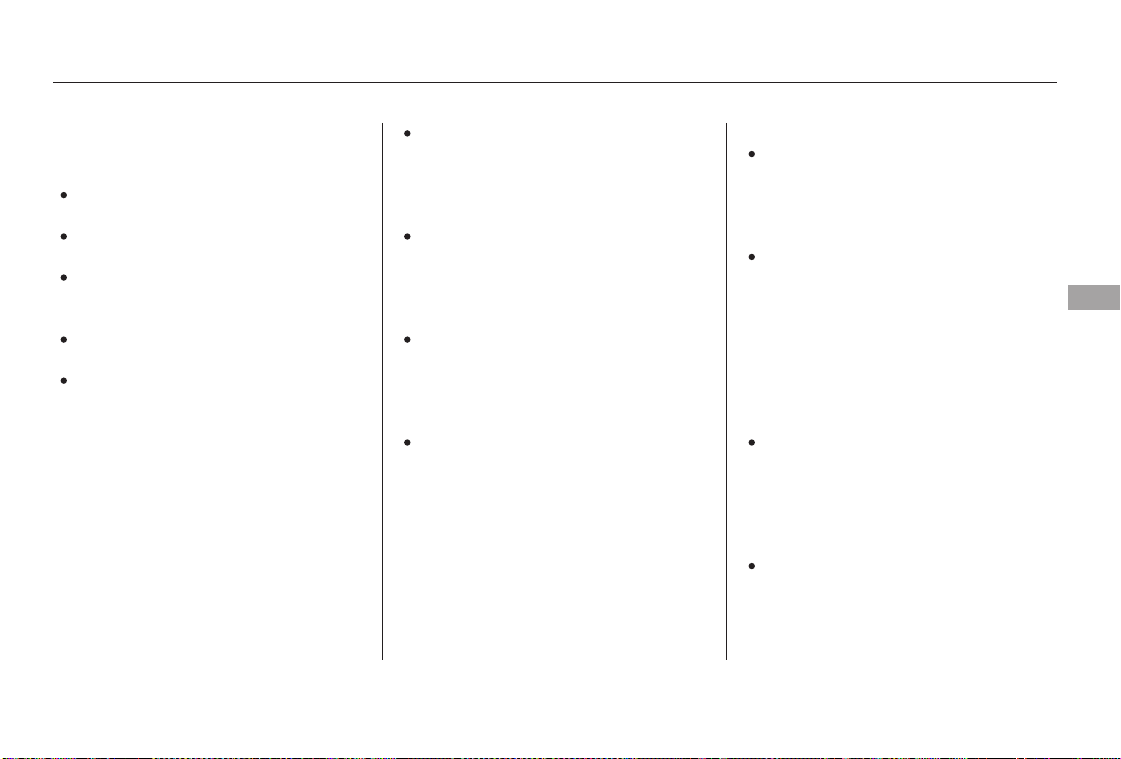Loading ...
Loading ...
Loading ...

−
−
−
−
−
−
−
Aggressive driving (hard
acceleration and braking)
Excessive idling, accelerating and
braking in stop-and-go traffic
Cold engine operation (engines
aremoreefficientwhenwarmed
up)
Driving with a heavy load or the
air conditioner running
Improperly inflated tires
The following factors can lower your
vehicle’s fuel economy:
A properly maintained vehicle
maximizes fuel economy. Poor
maintenance can significantly reduce
fuel economy. Always maintain your
vehicle according to the maintenance
messages displayed on the
information display (see
on page ).
For example:
Rapid
acceleration, abrupt cornering,
and hard braking increase fuel
consumption.
Aerodynamic drag has a big effect
on fuel economy at speeds above
45 mph (75 km/h). Reduce your
speed and you reduce the drag.
Trailers, car top carriers, roof
racks and bike racks are also big
contributors to increased drag.
If your vehicle has a
manual transmission, you can
boost your fuel economy by up
shifting as early as possible.
Idling
results in 0 miles per gallon (0 kms
per liter).
An underinflated tire increases
‘‘rolling resistance,’’ which reduces
fuel economy.
It puts a heavier
load on the engine, increasing fuel
consumption.
In
particular, a build-up of snow or
mud on your vehicle’s underside
adds weight and rolling resistance.
Frequent cleaning helps your fuel
economy.
296
CONTINUED
Fuel Economy
Fuel Economy Factors Use the recommended viscosity
motor oil, displaying the API
Certification Seal (see page
).
Improving Fuel Economy
Owner’s
Maintenance Checks
Drive moderately
Observe the speed limit
Always drive in the highest gear
possible
Avoid excessive idling
Maintain proper tire inflation
Avoid carrying excess weight in
your vehicle
Keep your vehicle clean
300
Vehicle Maintenance
Drive Efficiently
Before Driving
259
10/06/24 16:55:52 31SVA650_264
Loading ...
Loading ...
Loading ...